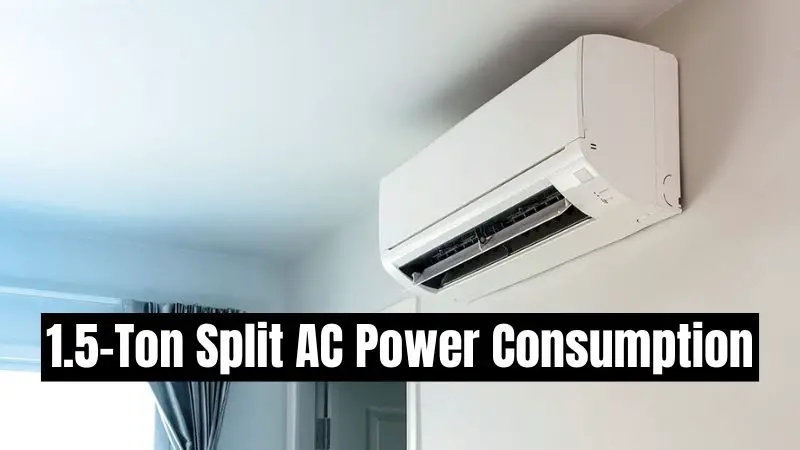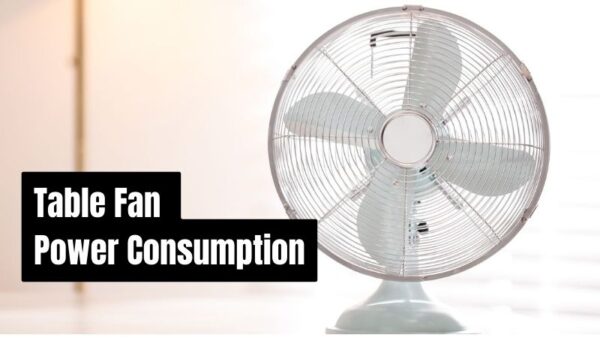Ever wonder what is the power consumption of a 1.5-ton split air conditioner or how much savings you can have by going with an inverter AC vs non-inverter AC or a 4-star AC vs a 5-star AC then you have come to the right place.
In this article, we will see in detail the power consumption of 1.5-ton air conditioners and the cost to run them.
The power consumption of a 1.5-ton split AC depends on a lot of factors like the temperature you run your AC, the outside temperature, type of AC, number of people in the room, how well the room is sealed, etc. Hence, it’s difficult to generalize.
If the temperature difference between your room and the atmosphere is below 10 degree Celsius, the power consumption of a 1.5-ton split air conditioner is between 900 kWh to 1200 kWh, for 5 hours of daily operation throughout the year. This is roughly equal to 0.5 kWh to 0.8 kWh of electricity consumption per hour.
And, if the temperature difference between your room and the atmosphere is above 15 degree Celsius, the power consumption of a 1.5-ton split air conditioner will be between 1900 kWh to 2300 kWh, for the same 5 hours of daily operation throughout the year. This is roughly equal to 1 kWh to 1.3 kWh of electricity consumption per hour.
Read the article to know in detail the power consumption of split air conditioners and how you can calculate your air conditioner’s power consumption.
This is a slightly lengthy article, hence feel free to skip to the part you are interested in.
There are basically three ways to calculate the power consumption of your 1.5-ton split AC:
- Calculate the power consumption of a 1.5-ton split AC from wattage (Slightly difficult way)
- Calculate the power consumption of a 1.5-ton split AC from the energy-saving label (The easiest way)
- Calculate the power consumption of a 1.5-ton split AC using an energy meter (The most accurate way)
Let me show you each one with an example.
Calculate the power consumption of a 1.5-ton split AC from wattage:
The power consumption of a 1.5-ton split conditioner (for that matter any electrical appliance) depends upon two main things,
- First is the wattage of your AC,
- And second is the operational hours.
Let us quickly see what these terms are and how can you find the same for your AC.
What is The Wattage of 1.5 Ton Split AC:
The maximum wattage of a 1.5-ton split AC is around 1500 Watts, however, the wattage does not remain constant throughout the operation.
Let me show you how wattage varies in the case of both inverter and non-inverter AC.
Let’s say it’s 40 degrees Celsius outside, you turn ON your inverter AC and set the temperature to 24 degrees Celsius. Now as the room is hot, in just a minute the AC compressor will start running at its maximum power of around 1500 watts to cool the room as soon as possible.
But once the room temperature reaches 24 degrees Celsius the running wattage of the compressor drops down as less power is needed to cool the room (as it’s already cooled).
The drop in wattage can be as low as 200 watts to 1000 watts.
Hence, an inverter air conditioner has a variable speed compressor that adjusts its speed and tonnage according to the cooling demand.
In the same scenario in a non-inverter AC, in just a minute the compressor will start running at its maximum power of around 1500 watts to cool the room as soon as possible.
However, once the room is cooled to the room temperature reaches 24 degrees Celsius, the compressor shuts down (at this point the wattage can be as low as 50 watts) and kicks back up once the room temperature increases 2 – 3 degrees above the set temperature.
Hence, a non-inverter air conditioner has a fixed-speed compressor that runs at maximum speed when cooling is needed and shuts down when the room is cooled.
It cannot adjust its speed and tonnage according to the cooling demand.

In both the air conditioners, in the first hour of operation, the compressor runs at its maximum wattage for pretty much the entire time to cool the room, but once the room is cooled the compressor at fewer watts (in the case of an inverter AC) or less frequently (in case of non-inverter AC).
Thus, in the first hour of operation, a 1.5-ton split AC consumes around 2 kWh of electricity, but as the room cools down, the power consumption goes down drastically as well. The power consumption can be as low as 0.5 kWh/hour to 1 kWh/hour.
Also, power consumption greatly depends on the temperature you set in your AC and the outside temperature. If the difference is large, then obviously power consumption will be higher, as the compressor will run at full power for more time to cool the room.
Vice versa, if the temperature difference is small, the power consumption is also small.
As a general rule of thumb, you can take the wattage of a 1.5-ton split AC between 1050 – 1300 watts. However, you can calculate the wattage as well if you know the ISEER of the AC.
The formula to calculate the wattage of an air conditioner for ISEER value is,
ISEER = Cooling capacity of the AC/Wattage (Energy consumed in one hour)

For example, the above image is of a 5-star 1.5-ton split AC from Samsung, its ISEER is 4.80, and its cooling capacity is around 5000 Watts.
Hence, its wattage is 1041 Watts (5000 Watts/4.80).
Similarly, I have calculated the wattage of Samsung and LG 1.5-ton split air conditioners.
| 1.5 Ton Split Inverter AC | ISEER | Wattage |
|---|---|---|
| Samsung (3-star) | 3.96 | 1262 Watts |
| Samsung (4-star) | 4.45 | 1123 Watts |
| Samsung (5-star) | 4.80 | 1041 Watts |
| LG (3-star) | 3.96 | 1262 Watts |
| LG (4-star) | 4.20 | 1190 Watts |
| LG (5-star) | 4.73 | 1060 Watts |
From the above table, it’s pretty clear that the wattage of a 1.5-ton split inverter ac is between 1050 watts to 1300 watts. However, it can go up to 1500 watts if needed.
Now that we know the wattage of a 1.5-ton split AC, let’s see how to calculate the power consumption. This is slightly different for an AC than any other appliance.
1.5 Ton Split AC Power Consumption:
Once you know the wattage you can calculate the power consumption by using this formula.
Power consumption of an appliance = Wattage of the appliance X operational hours
Operational hours in basically the number of hours you use your AC.
The above formula works fine for appliances without compressors like Ceiling fans, lights, and TVs. But, for appliances with compressors like your AC, there is a catch.
Because based on the room and ambient temperature the compressor will run for 50% of the time or 90 % to 100% of the time. Hence, we have to accommodate that in our calculation.
Generally, the bigger the temperature difference between ambient temperature and room temperature the higher the power consumption because the compressor of your AC will run for a long time to provide the necessary cooling.
The power consumption of an AC set at 24 degrees celsius with an ambient temperature of 35 degrees Celsius, will be half of an AC set at 24 degrees Celsius with an ambient temperature of 45 degrees Celsius.
The same is true if we go down, the power consumption of an AC set at 24 degrees Celsius with an ambient temperature of 35 degrees Celsius, will be half of an AC set at 18 degrees Celsius with an ambient temperature of 35 degrees Celsius.
Let me continue with the previous example of Samsung’s 1.5-ton, 5-star split Inverter AC. As we calculated the wattage of this AC is around 1041 watts (let’s round it off to 1050 watts).
Let’s assume we will be using this AC for 5 hours every day for an entire month.
I have calculated the daily, monthly, and annual power consumption of this 1.5-ton split inverter AC in two different scenarios:
- Compressor ON 50% time: The compressor will run at maximum power for 50% of the time and for the rest of the time it will run at very low wattage. This is applicable if the temperature difference inside the room and the atmosphere is below 10 degrees Celsius.
- Compressor ON 100% time: The compressor will run at maximum power pretty much all the time. This is applicable if the temperature difference inside the room and the atmosphere is between 15 to 20 degrees Celsius.
Daily power consumption of a 1.5-ton split inverter AC (5 hours of run time, compressor ON 100%): Wattage of the split AC X operational hours.
Wattage in our case is 1050 and operation hours are 5.
Hence, the Daily power consumption of a 1.5-ton split inverter AC (5 hours of run time, compressor ON 100%)= 1050 watts X 5 hours = 2.62 kWh
| 1.5-Ton Air Conditioner | Daily Power Consumption (kWh) (5 hours) | Monthly Power Consumption (kWh) (150 hours) | Annual Power Consumption (kWh) (1825 hours) |
|---|---|---|---|
| Compressor ON (50%) | 2.62 kWh | 78.75 kWh | 956.12 kWh |
| Compressor ON (100%) | 5.25 kWh | 157.50 kWh | 1916.25 kWh |
Note: the annual figures in the above table for compressor ON (100%) is an over-exaggeration, because, it’s rare to have a 20-degree temperature difference throughout the year. (Still, completely possible if you like to run your AC at 18 degree Celsius all the time)
Daily, Monthly, And Annual Power Consumption Of A 1.5-Ton Split AC:
For your reference, I have also calculated the daily, monthly, and annual power consumption of 1.5 ton split inverter AC (3-star, 4-star, and 5-star)
Case 1: Compressor ON 50% of the time (Good for scenarios where ambient and room temperature difference is below 10 degrees Celsius)
| 1.5-Ton Split Inverter Air Conditioner | Daily Power Consumption (5 hours, Comp ON 50%) | Monthly Power Consumption (150 hours, Comp ON 50%) | Daily Power Consumption (1,825 hours, Comp ON 50%) |
|---|---|---|---|
| (3-star) 1,260 Watts | 3.15 kWh | 94.50 kWh | 1,149 kWh |
| (4-star), 1,150 Watts | 2.88 kWh | 86.25 kWh | 1,049 kWh |
| (5-star), 1,050 Watts | 2.63 kWh | 78.75 kWh | 958 kWh |
Case 2: Compressor ON 100% of the time (Good for scenarios where ambient and room temperature difference is more than 15 degrees Celsius)
| 1.5-Ton Split Inverter Air Conditioner | Daily Power Consumption (5 hours, Comp ON 100%) | Monthly Power Consumption (150 hours, Comp ON 100%) | Daily Power Consumption (1,825 hours, Comp ON 100%) |
|---|---|---|---|
| (3-star), 1,260 Watts | 6.30 kWh | 189.00 kWh | 2,299 kWh |
| (4-star), 1,150 Watts | 5.75 kWh | 172.50 kWh | 2,098 kWh |
| (5-star), 1,050 Watts | 5.25 kWh | 157.50 kWh | 1,916 kWh |
One thing is pretty clear from the above tables, as you decrease your AC temperature (in turn increase the temperature difference between outside and inside) the power consumption goes up drastically.
Hence, a big power-saving tip would be, whenever possible always set your AC temperature 10 degrees lower than the outside temperature, not more than that.
If you are wondering what about 1.5-ton non-inverter split AC.
1.5-ton non-inverter split ACs are energy-rated up to 3 stars, there are no 4-star and 5-star energy-rated non-inverter ACs.
In comparison to an inverter split AC, you can expect a 10% increment in non-inverter AC power consumption.
Now that we know the power consumption, let me show you how to calculate the running cost.
How Much Does it Cost To Run 1.5-Ton Split AC:
You can calculate the cost to run your 1.5-ton split AC by using the following formula.
Cost to run an appliance = Power consumption of the appliance X electricity tariff
At this point, we know our AC’s power consumption, hence, let’s quickly see what is electricity tariff.
In simple words, electricity tariff is the amount your electricity provider charges you for the usage of one unit (kWh) of electricity. I live in Mumbai, India here the electricity tariff is Rs 12/kWh.
(What is a Kilowatt hour (kWh) – Kilowatt hours or units of electricity is the energy consumption of a device. For example, a 50-watt table fan running for 50 hours will consume 50 watts x 50 hours = 2500-watt hours = 2.5-kilowatt hours of electricity = 2.5 units of electricity. (1 kWh of electricity = 1 unit of electricity))
To find your electricity tariff, just look into your previous month’s electricity bill and find out your monthly electricity consumption, then just divide your monthly electricity consumption by your total monthly electricity bill, the figure you get is approximately your electricity tariff.
I have put together the following table that shows the electricity tariff of a few countries.
Electricity Tariff Around The World:
| Country | Electricity Tariff | Country | Electricity Tariff |
|---|---|---|---|
| United States | $ 0.154/kWh | India | Rs 6/kWh |
| United Kingdom | £ 0.27/kWh | Germany | € 0.44/kWh |
| Canada | C$ 0.30/kWh | Philippines | ₱ 9.70/kWh |
| Australia | A$ 0.32/kWh | South Africa | R 2.558/kWh |
You can also check out the following resources to know your electricity tariff:
- https://www.globalpetrolprices.com/electricity_prices/
- https://www.statista.com/statistics/263492/electricity-prices-in-selected-countries/
For your reference, By using the above formula I have calculated the monthly running cost of a 1.5-ton split AC
| Country (Tariff) | Monthly Running Cost (5 hrs, Comp ON 50%) | Monthly Running Cost (5 hrs, Comp ON 100%) |
|---|---|---|
| Mumbai, India (Tariff Rs 10/kWh) | 78.75 kWh, Rs 787 | 157.50 kWh, Rs 1,575 |
| Philippines (Tariff ₱ 9.70/kWh) | 78.75 kWh, ₱ 763 | 157.50 kWh, ₱ 1,527 |
| US (Tariff $0.162/kWh) | 78.75 kWh, $ 12.75 | 157.50 kWh, $ 25.52 |
| UK (Tariff £ 0.27/kWh) | 78.75 kWh, $ 21.26 | 157.50 kWh, $ 42.52 |
| Canada (Tariff C$ 0.156/kWh) | 78.75 kWh, $ 12.28 | 157.50 kWh, $ 24.56 |
Similarly, you can calculate the daily and annual power consumption of your AC.
You can use the below calculator to calculate your split AC power consumption based on your operational hours.
Split AC Power Consumption Calculator:
Remember the above-calculated values show the maximum power consumption of a split AC mostly when the ambient and room temperature difference is more than 20 degree Celsius.
For temperature differences below 10 degrees, you can divide the calculated power consumption values by 2.
If you are not happy with the approximate results and you want to know your AC’s exact power consumption, then I would suggest you buy a cheap energy meter from amazon. I have shown this method in the last part of the blog.
Now let me show you the second method which is the quickest one.
Calculate 1.5 Ton Split AC Power Consumption From Energy-Saving Label:
In almost every country, all air conditioners available today are energy star rated, hence, you can go to the air conditioner manufacturer’s website or amazon and find an energy-saving label associated with the AC.
The below image shows the annual power consumption of Samsung 1.5-ton split inverter ACs listed on Amazon India.

Note: One thing to keep in mind is the annual power consumption is calculated based on 1,600 hours of annual operations. This is roughly equal to 4.5 hours of run time every day for an entire year.
Also, these tests are done in the temperature range between 24 to 43 degree Celsius, and out of the 1600 hours of operation, almost 90% of testing is done below 35 degrees Celsius.
Hence, if your AC usage is maximum during the summer days or you like in a place where the outside temperature is over 40 degrees celsius then your power consumption will be more than what’s on the label.

To get a well-rounded answer about the power consumption of 1.5-ton split air conditioners, I have browsed through amazon and a bunch of other e-commerce websites to find out the annual power consumption of a variety of 1.5-ton conditioners (both inverter AC and non-inverter-AC) and compiled the following data.
I have shown the power consumption comparison between inverter and non-inverter AC in the later part of this article.
Type: 1.5-Ton Split Inverter AC
| AC Brands | Annual Power Consumption (3-star) | Annual Power Consumption (4-star) | Annual Power Consumption (5-star) |
|---|---|---|---|
| Samsung | 977.8 kWh | 870.31 kWh | 806.28 kWh |
| LG | 1015.7 kWh | 920.82 kWh | 818.81 kWh |
| Carrier | 999.69 kWh to 1061.89 kWh | 974.21 kWh | 754.05 kWh to 888.75 kWh |
| O General | 1066 kWh | NA | 794 kWh |
| Panasonic | 1002.72 kWh | 961.12 kWh | 840.75 kWh to 858.92 kWh |
| Voltas | 1039.98 kWh | 981.81 kWh | 892.32 kWh |
| Daikin | 989.31 kWh | 881.05 kWh | 667.36 kWh to 785.67 kWh |
| Bluestar | 1002.84 kWh | 977.46 kWh | 754.85 kWh to 857.36kWh |
Note: I have taken air conditioners that are energy rated for the year 2022, you will find old ACs on amazon as well which consume more energy than what I have mentioned.
Few things to notice from the above table,
- A same-size air conditioner with a similar energy star rating from the same brand can have different power consumption. For example, the power consumption of carrier 1.5-ton 5-star split AC is between 754.05 kWh to 888.75 kWh.
- The most energy-efficient 1.5-ton split AC is from Daikin (this model), it consumes just 667.36 kWh, whereas similar size and star-rated ACs consume between 750 kWh to 880 kWh.
To get your AC power consumption for a specific number of hours you can divide the annual power consumption of your AC by 1,600, to know the power consumption per hour.
One thing you will notice from the above table is, the higher the number of energy-saving stars, the less the annual power consumption.
But exactly how much, let’s find out.
How stars affect the power consumption of 1.5 Ton Air Conditioners:
From the above table, we can clearly see,
With an increase in energy-saving stars, the annual power consumption of an air conditioner drops by 10% to 20%.
- For example, the 1.5-ton, 3-star split AC from Samsung has an annual power consumption of 977.8 kWh, whereas the 4-star one has an annual power consumption of 870 kWh (almost 10% less than the 3-star one), and the 5-star one has an annual power consumption of 806.28 kWh (almost 10% less than the 4-star one).
- In the case of Daikin, the 1.5-ton, 4-star split AC has an annual power consumption of 881.05 kWh, whereas the 5-star one has an annual power consumption of 667.36 kWh (almost 25% less than the 4-star one),
The bottom line is “More energy stars, means more savings”, to quantify it, with every additional energy-saving star you can expect almost a 10% reduction in power consumption.
Now let’s look at how much it costs to run 1.5-ton split air conditioners.
1.5 Ton Inverter AC vs Non-Inverter AC Power Consumption:
Till now we saw the annual power consumption of inverter AC, now let’s look at the annual power consumption of non-inverter ACs.
In case you don’t know the difference between an inverter and non-inverter AC, then here’s a quick explanation.
An inverter AC has a variable-speed compressor that runs at all times and adjusts its speed and tonnage according to the cooling demand.
Whereas a non-inverter AC has a single-speed compressor that is either completely OFF or runs at the maximum speed, it can’t adjust its speed and tonnage as per the cooling demand.
This frequent start and stop of the compressor increase the power consumption of a non-inverter AC as more current is needed to start a compressor than to run it.
For easy comparison, I have made the following table that compares the annual power consumption of 1.5-ton split inverter AC Vs 1.5-ton split non-inverter AC.
| Brands | 3-star (Inverter) | 3-star (Non-Inverter) |
|---|---|---|
| Samsung | 977.8 kWh | 1091.49 kWh |
| LG | 1015.7 kWh | NA |
| Carrier | 999.69 kWh to 1061.89 kWh | 1111.98 kWh |
| O General | 1066 kWh | NA |
| Panasonic | 1002.72 kWh | 1122.45 kWh |
| Voltas | 1039.98 kWh | 1128.65 kWh |
| Daikin | 989.31 kWh | 1045.05 kWh |
| Bluestar | 1002.84 kWh | 1076 kWh |
Few things to notice from the above table,
- 1.5-ton non-inverter split ACs are energy-rated up to 3 stars, there are no 4-star and 5-star energy-rated non-inverter ACs.
- The annual power consumption of a similar size, similar energy-star-rated inverter AC is 5% – 10% less than non-inverter AC.
- The 1.5-ton, 3-star inverter AC from Daikin has an annual power consumption of 989.31 kWh, whereas the non-inverter one has an annual power consumption of 1045.05 kWh (almost 5% more than the inverter one)
Just like we calculated before, you can calculate the cost to run a 1.5-ton split AC by multiplying its annual power consumption (from the label) by your local electricity tariff.
If you don’t the above two methods both give your approximate results then you can buy a simple energy meter from amazon.
Calculate the exact power consumption of any AC using Energy Meter:
Kill A Watt Meter or Energy Meter is a simple device that gives real-time data on the power consumption of any device.
You can check it on amazon using this link – Kill A Watt Electricity Usage Monitor
To use a kill-a-watt meter to calculate the power consumption of your air conditioner, first, connect one of your ACs plug into the kill-a-watt meter, and then plug the kill-a-watt meter in your wall socket and you are good to go.
Then let the AC run and you can see in real-time how many kWh (units) of electricity it is consuming.
Using any one of three methods you should be able to calculate the power consumption of your AC and let me be real it’s a lot. Air conditioners are easily the most power-hungry appliance in most houses, hence, let’s see some actionable tips to reduce your AC power consumption.
How To Reduce Your Air Conditioner’s Power Consumption:
- Clean your AC filters
- Keep your rooms sealed
- Shut down all the appliances in your room, where AC is running
- Keep the compressor unit in shade and cool it down with water
- Use ceiling fans for circulation
- Control the volume of air inside your room
You can check out this article to know in detail about AC power saving tips.
if you liked this article then please share it with your friends on Facebook, Pinterest, WhatsApp, and Reddit.
You can check out this article to know more about the power consumption of common household appliances.
Check out my articles on solar power for home and how it can help you save your electricity bill.
Check out the following articles to know the power consumption of other appliances:
- Power consumption of infrared heaters.
- Power consumption of water heater
- Power consumption of tankless water heater.
- Power consumption of an electric immersion heater.
- Power consumption of an electric kettle.
- Power consumption of an electric fireplace.
- Power consumption of a washing machine.
- Power consumption of air conditioner.
You can check out this article to know more about the power consumption of common household appliances.
Check out my articles on solar power for home and how it can help you save your electricity bill.
Thank you for reading.
Aavjo 👋
References:
- Double Door Refrigerator Power Consumption
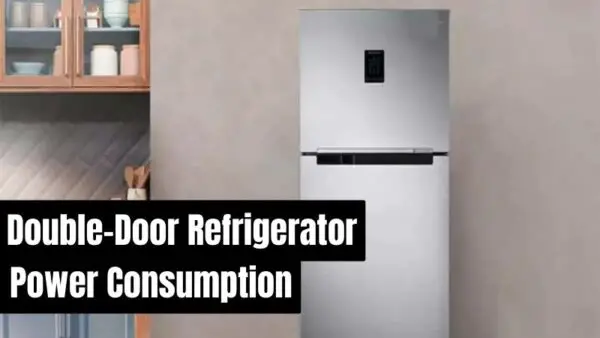 Share the article In this article, we will see double-door refrigerator’s power consumption and the cost… Read more: Double Door Refrigerator Power Consumption
Share the article In this article, we will see double-door refrigerator’s power consumption and the cost… Read more: Double Door Refrigerator Power Consumption - How to reduce air conditioner power consumption
 Share the articleSummer is here, and that means one thing: air conditioners are turned up to… Read more: How to reduce air conditioner power consumption
Share the articleSummer is here, and that means one thing: air conditioners are turned up to… Read more: How to reduce air conditioner power consumption - How To Save Electricity At School
 Share the articleElectricity consumption in schools is mainly because of two main sources of power consumption… Read more: How To Save Electricity At School
Share the articleElectricity consumption in schools is mainly because of two main sources of power consumption… Read more: How To Save Electricity At School - How To Reduce Power Consumption Of A Refrigerator?
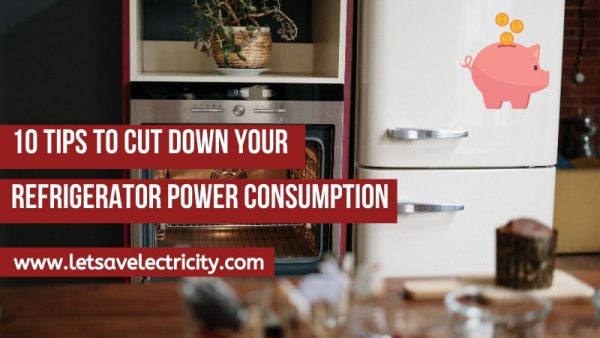 Share the articleIn this article, we will see how you can reduce your refrigerator power consumption… Read more: How To Reduce Power Consumption Of A Refrigerator?
Share the articleIn this article, we will see how you can reduce your refrigerator power consumption… Read more: How To Reduce Power Consumption Of A Refrigerator? - How To Calculate Power Consumption Of Any Appliance
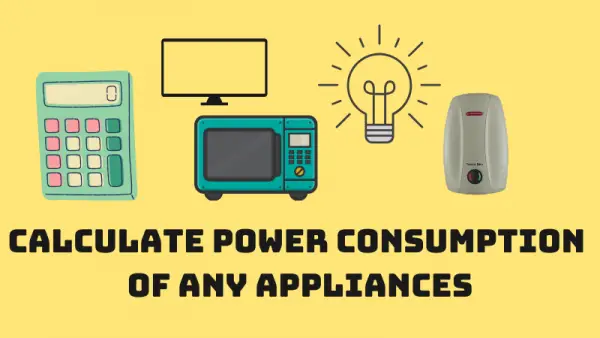 Share the articleEver wonder how much electricity the light bulb in your kitchen consumes or how… Read more: How To Calculate Power Consumption Of Any Appliance
Share the articleEver wonder how much electricity the light bulb in your kitchen consumes or how… Read more: How To Calculate Power Consumption Of Any Appliance - Top Load Vs Front Load Washing Machine
 Share the articleThe biggest question that came to my mind while choosing a washing machine last… Read more: Top Load Vs Front Load Washing Machine
Share the articleThe biggest question that came to my mind while choosing a washing machine last… Read more: Top Load Vs Front Load Washing Machine


